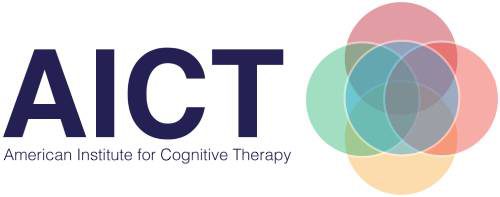What You Need to Know About Depression
By Dr. Robert Leahy
Major Depressive Disorder (MDD) is often a debilitating problem for millions of people. The symptoms of depression include depressed mood, loss of interest or pleasure, significant weight loss or weight gain, insomnia or hypersomnia, psychomotor agitation or retardation, fatigue or loss of energy, feelings of worthlessness or guilt, loss of ability to think or concentrate or indecisiveness, and recurrent thoughts of death or suicide. The symptoms must be present nearly every day for two weeks and must cause some impairment in functioning (American Psychiatric Association [APA], 2022). Some people experience a persistent low- level depression that may last for more than two years (persistent depressive disorder or dysthymia). Many people experience recurrent depressive episodes during their lifetime: people who have two episodes are likely to have seven episodes with future episodes less likely to be related to life events (the Kindling Effect) (Kessler et al, 2003).
What is the Economic Cost of Depression?
Depression is the leading cause of disability for people between ages 15 and 44 and affects 322 million people worldwide resulting in 2.7 million disability-adjusted life-years in 2016 (Greenberg, et al., 2021). The economic burden of depression between 2010 and 2020 increased by 37.6% from $US236.6 billion to $326.2 billion (Greenberg et al., 2021). 80 % of depressed people are impaired in their daily functioning, losing—on average—5.6 hours of productive work per week (Brody & Pratt, 2008; Stewart, Ricci, Chee, Hahn, & Morganstein, 2003). Depressed people are seven times more likely than nondepressed people to be unemployed (Lerner et al., 2004).
How Common is Depression?
When researchers ask people about current or past depressive episodes, they find that 24.2% of women and 14.2% of men report depressive episodes (Patten, 2009). And children and adolescents also experience depressive symptoms. Over a six-month period 50% of children and adolescents and 20% of adults report some symptoms of depression (Kessler, Avenevoli, & Merikangas, 2001). Rates of depression were highest for those 18-29 (21.0%), followed by 45-64 (18.4%), and 65 and over (18.4%) and 30—44 (16.8%) (Villarroel & Terlizzi, 2020). Females are more likely than males to suffer from depression.By mid-to-late adolescence, girls are approximately twice as likely to be diagnosed with MDD and report twice as many depressive symptoms as boys do (Hyde, Mezulis, & Abramson, 2008). This pattern remains highly consistent until about the age of 55 (Borooah, 2010).
In other studies depression was highest among non-Hispanic Blacks (9.2%) followed by Hispanic (8.9%), non-Hispanic white (7.9%) and lowest among non-Hispanic Asians (3.1%) (Brody, Pratt, & Hughes, 2018). In addition, rates of depression are related to economic class, with those in the bottom level of poverty have the highest levels (15.8%) while those at four times the poverty level show the lowest levels (3.5%) (Brody et al., 2018).
What Medical Conditions are Associated with Depression?
Certain medical conditions are associated with depression, including congestive heart failure, diabetes, arthritis, hypertension, myocardial infarctions (Byers, Covinsky, Barnes, & Yaffe, 2012; Katon, Lin, & Kroenke, 2007). 63.8 % of people with Alcohol Use Disorder have a history of depression (Kuria, et al., 2012). Physical illness, especially in the elderly, is correlated with depression. For individuals with chronic depression or a history of MDD, there is increased risk of Alzheimer’s disease, stroke, and poor outcome of HIV disease (Andersen, Lolk, Kragh-Sørensen, Petersen, & Green, 2005; Bos et al., 2008; Leserman, 2003). Elderly people who are depressed are more likely to die earlier (Janzing, Bouwens, Teunisse, Vant’ Hof, & Zitman, 1999). Several physical conditions are associated with depression including pharmacological (steroid use, amphetamine/cocaine/alcohol/sedative withdrawal), endocrine (hypothyroidism and hyperthyroidism, diabetes, Cushing’s disease), infectious (general paresis, influenza, hepatitis, AIDS), or neurological (multiple sclerosis, Parkinson’s disease, head trauma, cerebrovascular disorder) (Gunn et al., 2012; Welch et al., 2009).
Depression is Difficult but Treatable
The good news is that there are treatments that can be effective for those suffering from depression. There are a wide range of medications that can sometimes be used in combination to treat depression. In addition, a number of Cognitive-Behavioral Therapies can help sufferers overcome depression. These include cognitive therapy, behavioral activation, Acceptance and Commitment Therapy (ACT), mindfulness, problem solving therapy, Meta-cognitive therapy, Interpersonal Psychotherapy and Dialectical Behavior Therapy. Many patients can benefit from combining therapy with medication. To decrease or prevent future episodes those with recurrent depression can benefit from maintenance medication, Mindfulness Based Cognitive Therapy, and periodic or continual support from therapy.
Written by AICT’s Senior Clinicians Dr. Robert Leahy

